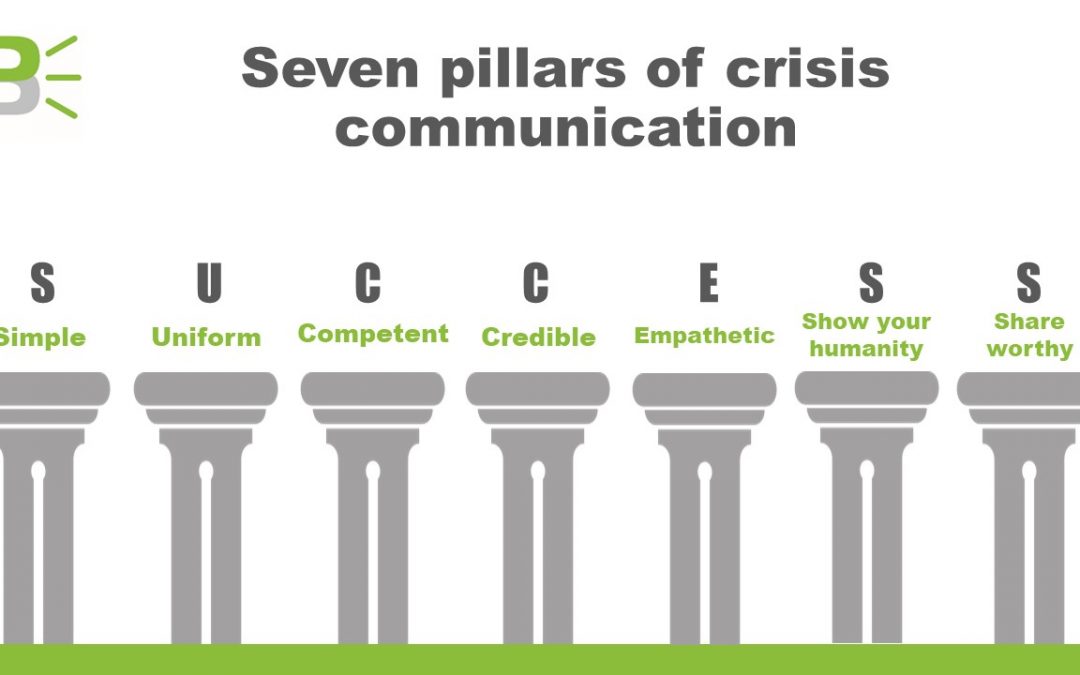The acronym VUCA (Volatility, Uncertainty, Complexity and Ambiguity) was coined in 1987 and was based on the leadership theories of Warren Bennis and Burt Nanus. Fast forward 33 years and 2020 is setting a new standard of VUCA.
The challenges we face are not only managing the crisis and change, but also communicating our strategy to our teams and customers. I spoke about this recently to members of SA Leaders and presented the 7 pillars of good crisis communication.
Simple
“An anxious brain does not learn.” When we are stressed our brain shuts down and it is hard to take on new information and make clear decisions. When communicating in times of crisis, simplicity is best, and clarity is king. Ensure your message has a clear objective, is relevant, and tailored to your audience. The goal is to have a message that is visual, memorable, and easily shared.
Uniform
It is important to convey your message consistently across all channels. Both internal and external communication, from the CEO through to a casual employee. This to ensure your message aligns with your company values and your branding.
Competent
In times of change, highlighting your competency is important. Do you have the skills, knowledge, resources, and people to follow through and get things done? Who needs to be on your crisis/change team? Choose people with expertise in different areas that can complement your strengths.
Credible
Do you and your team have credibility? Do we trust you and can we believe you? This is where it’s important to make sure that your delivery matches your message. When presenting show that you are calm and in control and go low and slow to add emphasis. Ensure you include evidence to support your message.
Empathetic
Theodore Roosevelt said, “Nobody cares how much you know until they know how much you care.” Radical empathy is required to build rapport. You demonstrate this by listening, connecting, acknowledging, and supporting the people you are communicating with. The goal here is to put empathy first before you speak.
Show your humanity
In times of crisis and change, people need to see your humanity. It’s okay to show us how you feel and to let and to let down your guard. Research shows that speakers that share personal stories have greater credibility as they are seen as more likeable and approachable.
Share worthy
Now, get your message out there. Make it simple, visual and share worthy. You want to get people talking because word-of-mouth will help spread and cement your message. Include a strategy to encourage sharing your message internally and externally where relevant.
If you follow these seven steps you will stand out as a leader and inspire others to follow. If you ever get stuck, ask yourself “What would Trump do?” and then do the opposite and you’ll be fine!
- Run your Own Race - July 29, 2024
- Beware The Veneer of Fear - July 3, 2024
- Does Your Company Need a PowerPoint Overhaul? - May 20, 2024


